New insights into Acinetobacter baumannii pathogenesis revealed by high-density pyrosequencing and transposon mutagenesis
- PMID: 17344419
- PMCID: PMC1820901
- DOI: 10.1101/gad.1510307
New insights into Acinetobacter baumannii pathogenesis revealed by high-density pyrosequencing and transposon mutagenesis
Abstract
Acinetobacter baumannii has emerged as an important and problematic human pathogen as it is the causative agent of several types of infections including pneumonia, meningitis, septicemia, and urinary tract infections. We explored the pathogenic content of this harmful pathogen using a combination of DNA sequencing and insertional mutagenesis. The genome of this organism was sequenced using a strategy involving high-density pyrosequencing, a novel, rapid method of high-throughput sequencing. Excluding the rDNA repeats, the assembled genome is 3,976,746 base pairs (bp) and has 3830 ORFs. A significant fraction of ORFs (17.2%) are located in 28 putative alien islands, indicating that the genome has acquired a large amount of foreign DNA. Consistent with its role in pathogenesis, a remarkable number of the islands (16) contain genes implicated in virulence, indicating the organism devotes a considerable portion of its genes to pathogenesis. The largest island contains elements homologous to the Legionella/Coxiella Type IV secretion apparatus. Type IV secretion systems have been demonstrated to be important for virulence in other organisms and thus are likely to help mediate pathogenesis of A. baumannii. Insertional mutagenesis generated avirulent isolates of A. baumannii and verified that six of the islands contain virulence genes, including two novel islands containing genes that lacked homology with others in the databases. The DNA sequencing approach described in this study allows the rapid elucidation of the DNA sequence of any microbe and, when combined with genetic screens, can identify many novel genes important for microbial pathogenesis.
Figures
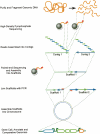
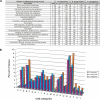

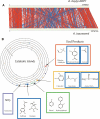

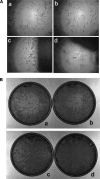
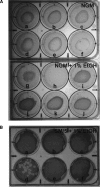
Similar articles
-
Complete genome sequence of hypervirulent and outbreak-associated Acinetobacter baumannii strain LAC-4: epidemiology, resistance genetic determinants and potential virulence factors.Sci Rep. 2015 Mar 2;5:8643. doi: 10.1038/srep08643. Sci Rep. 2015. PMID: 25728466 Free PMC article.
-
In silico analysis of virulence genes in an emerging dental pathogen A. baumannii and related species.Arch Oral Biol. 2018 Oct;94:93-98. doi: 10.1016/j.archoralbio.2018.07.001. Epub 2018 Jul 7. Arch Oral Biol. 2018. PMID: 30015217
-
Complete genome sequence of Acinetobacter baumannii MDR-TJ and insights into its mechanism of antibiotic resistance.J Antimicrob Chemother. 2012 Dec;67(12):2825-32. doi: 10.1093/jac/dks327. Epub 2012 Sep 5. J Antimicrob Chemother. 2012. PMID: 22952140
-
The genomics of Acinetobacter baumannii: insights into genome plasticity, antimicrobial resistance and pathogenicity.IUBMB Life. 2011 Dec;63(12):1068-74. doi: 10.1002/iub.531. Epub 2011 Oct 27. IUBMB Life. 2011. PMID: 22034231 Review.
-
Acinetobacter baumannii: human infections, factors contributing to pathogenesis and animal models.FEMS Microbiol Rev. 2013 Mar;37(2):130-55. doi: 10.1111/j.1574-6976.2012.00344.x. Epub 2012 Jun 18. FEMS Microbiol Rev. 2013. PMID: 22568581 Review.
Cited by
-
Complete genome sequence of hypervirulent and outbreak-associated Acinetobacter baumannii strain LAC-4: epidemiology, resistance genetic determinants and potential virulence factors.Sci Rep. 2015 Mar 2;5:8643. doi: 10.1038/srep08643. Sci Rep. 2015. PMID: 25728466 Free PMC article.
-
Stress response and virulence functions of the Acinetobacter baumannii NfuA Fe-S scaffold protein.J Bacteriol. 2012 Jun;194(11):2884-93. doi: 10.1128/JB.00213-12. Epub 2012 Mar 30. J Bacteriol. 2012. PMID: 22467784 Free PMC article.
-
Stereochemical insignificance discovered in Acinetobacter baumannii quorum sensing.PLoS One. 2012;7(5):e37102. doi: 10.1371/journal.pone.0037102. Epub 2012 May 22. PLoS One. 2012. Retraction in: PLoS One. 2013 May 10;8(5). doi: 10.1371/annotation/1345f9b0-016e-4123-9e72-6ccc4fa17ba2. Retraction in: PLoS One. 2013 Apr 24;8(4). doi: 10.1371/annotation/8f2ddf91-3499-4627-9a91-449b78465f9d. PMID: 22629354 Free PMC article. Retracted.
-
Mutations Decreasing Intrinsic β-Lactam Resistance Are Linked to Cell Division in the Nosocomial Pathogen Acinetobacter baumannii.Antimicrob Agents Chemother. 2016 May 23;60(6):3751-8. doi: 10.1128/AAC.00361-16. Print 2016 Jun. Antimicrob Agents Chemother. 2016. PMID: 27067318 Free PMC article.
-
A multidrug resistance plasmid contains the molecular switch for type VI secretion in Acinetobacter baumannii.Proc Natl Acad Sci U S A. 2015 Jul 28;112(30):9442-7. doi: 10.1073/pnas.1502966112. Epub 2015 Jul 13. Proc Natl Acad Sci U S A. 2015. PMID: 26170289 Free PMC article.
References
-
- Abbott A. Medics braced for fresh superbug. Nature. 2005;436:758. - PubMed
-
- Alegado R.A., Campbell M.C., Chen W.C., Slutz S.S., Tan M.W., Campbell M.C., Chen W.C., Slutz S.S., Tan M.W., Chen W.C., Slutz S.S., Tan M.W., Slutz S.S., Tan M.W., Tan M.W. Characterization of mediators of microbial virulence and innate immunity using the Caenorhabditis elegans host-pathogen model. Cell. Microbiol. 2003;5:435–444. - PubMed
-
- Altschul S.F., Gish W., Miller W., Myers E.W., Lipman D.J., Gish W., Miller W., Myers E.W., Lipman D.J., Miller W., Myers E.W., Lipman D.J., Myers E.W., Lipman D.J., Lipman D.J. Basic local alignment search tool. J. Mol. Biol. 1990;215:403–410. - PubMed
-
- Altschul S.F., Madden T.L., Schaffer A.A., Zhang J., Zhang Z., Miller W., Lipman D.J., Madden T.L., Schaffer A.A., Zhang J., Zhang Z., Miller W., Lipman D.J., Schaffer A.A., Zhang J., Zhang Z., Miller W., Lipman D.J., Zhang J., Zhang Z., Miller W., Lipman D.J., Zhang Z., Miller W., Lipman D.J., Miller W., Lipman D.J., Lipman D.J. Gapped BLAST and PSI-BLAST: A new generation of protein database search programs. Nucleic Acids Res. 1997;25:3389–3402. - PMC - PubMed
-
- Averhoff B., Friedrich A., Friedrich A. Type IV pili-related natural transformation systems: DNA transport in mesophilic and thermophilic bacteria. Arch. Microbiol. 2003;180:385–393. - PubMed
Publication types
MeSH terms
Substances
Grants and funding
LinkOut - more resources
Full Text Sources
Other Literature Sources
Molecular Biology Databases
